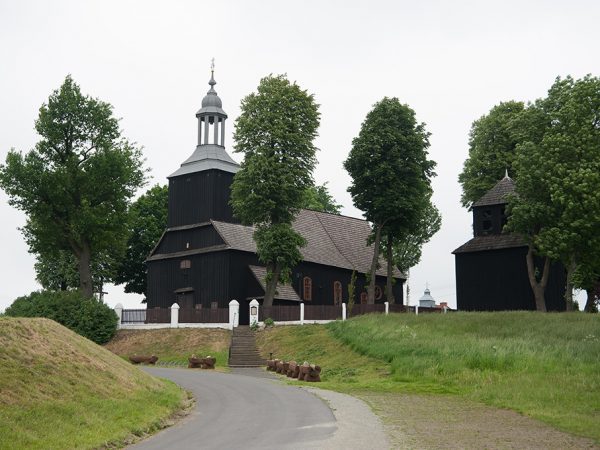Wooden monuments
The copy of the image from Jasna Góra
In the main altar there is an image of the Holy Mother of Blizanów. It has accompanied the people from Blizanów for 400 hundred years now and it has enjoyed a special cult because the prayers said in frot of the image are very often heard. The evidence for this are numerous votive offerings donated by the faithful.
The image is a copy painted in life from the original painting from Częstochowa. It was created in the 17th century in one of the many workshops located by Jasna Góra, which created comissioned replicas.
- The most precious of the votive offerings is a dress made of silver sheet and two crowns donated around 1760 by the castellan of Rogoźno’s wife, Anna Molska. Her husband Maksymilian, the owner of the village, offered in turn two remarkable altars.
- The faithful reacted very emotionally to every miracle. In effect there are many interesting votive offerings.
- A song wrote especially in honour of the Holy Mother of Blizanów is sung in the church during the celebratory unveiling of the image.
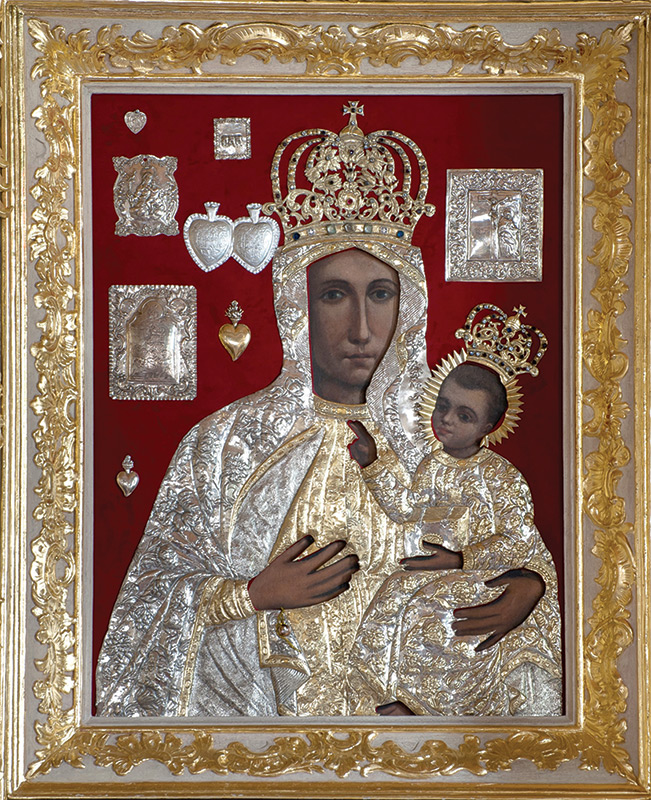

THANKSGIVING VOTIVE OFFERINGS
In the painting of Mother of God from Blizanów, which is a 17th-century copy of the painting of Black Madonna from Jasna Góra, many votive offerings can be found. A votive is an object offered in the form of plaques carved from a silver or gilded sheet, sometimes in the shape of heart, hands, eyes which symbolize a specific healing. The offerings were hanged often around altars which were objects of particular worship. There are over 100 of them in the church in Blizanów. One of the most interesting offerings shows three teeth, and the most valuable and biggest one is a silver dress and two crowns offered around 1760 by the Rogoźno castellan’s wife – Anna Molska.
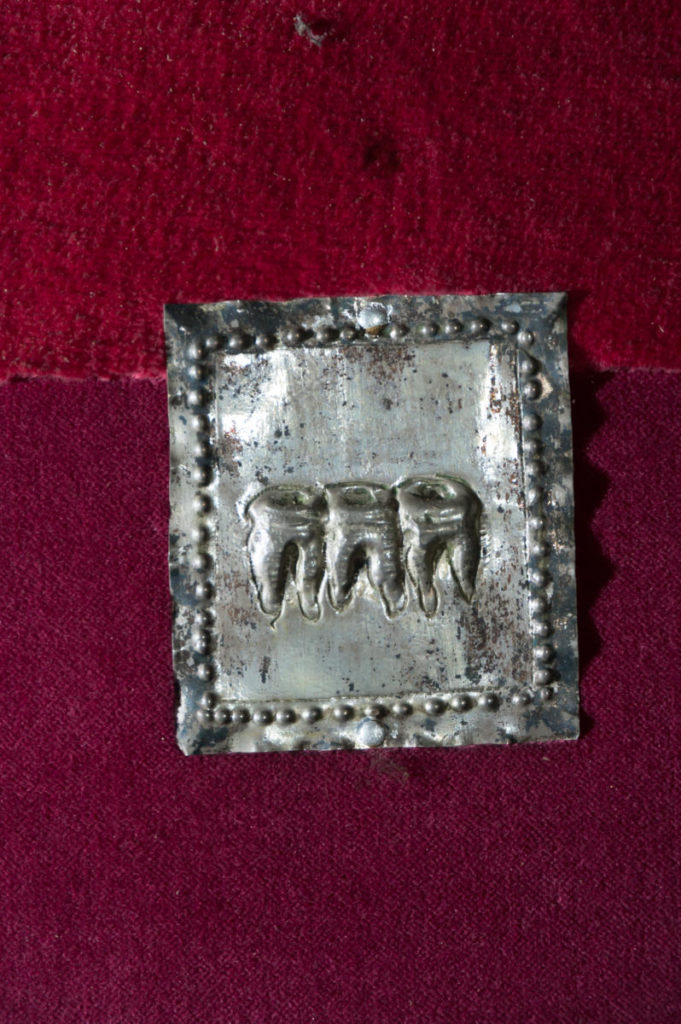
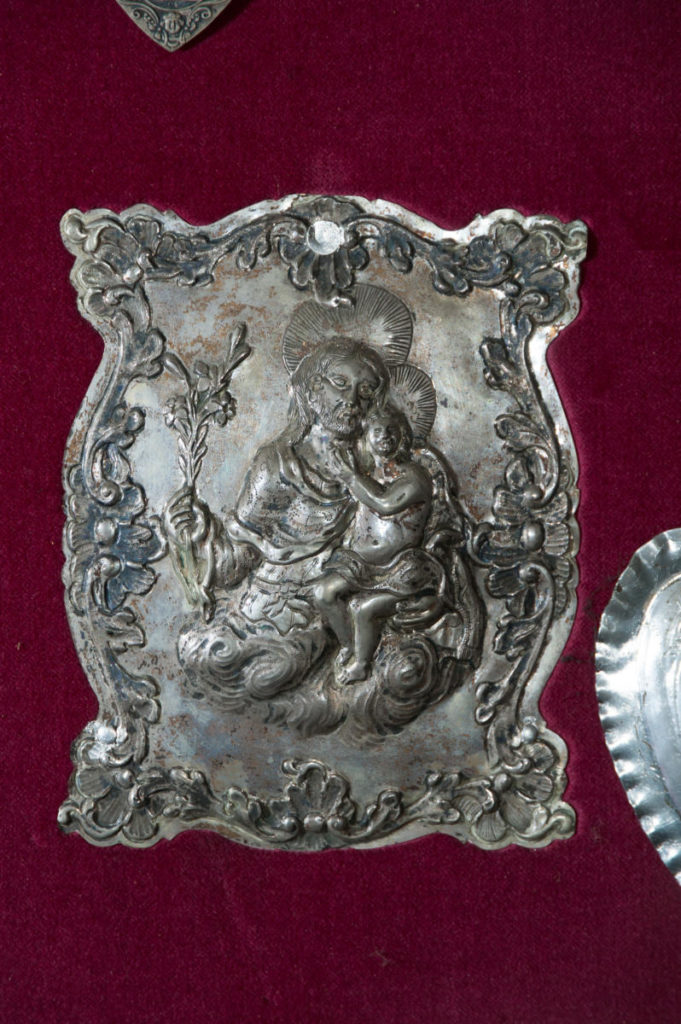


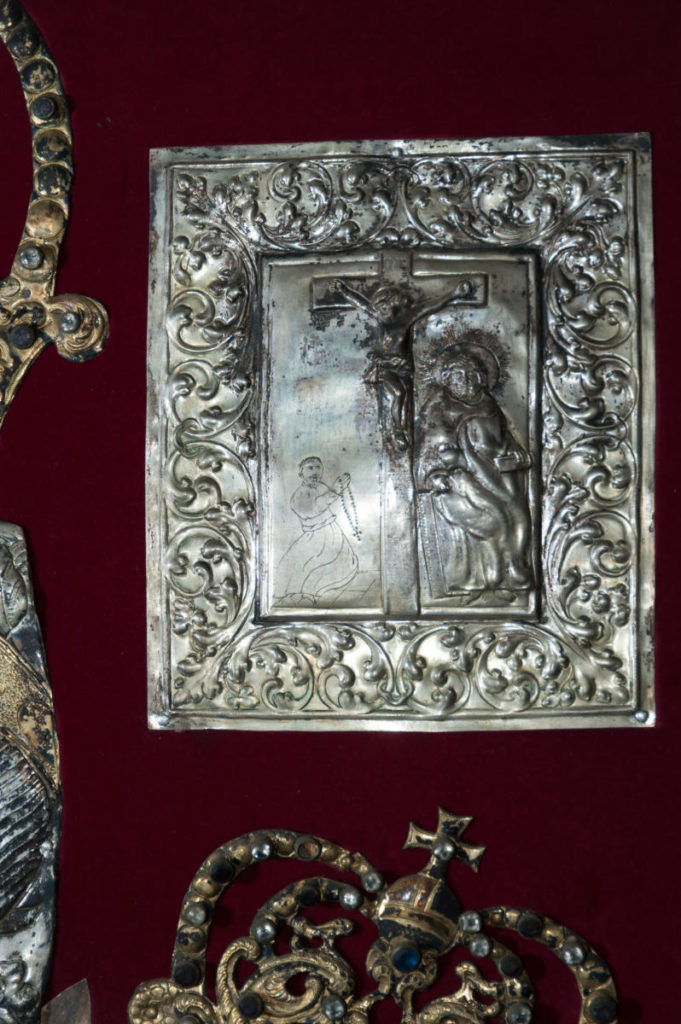
Altars like a tableau
Maksymilian Molski was a friend of the Franciscan and Jesuit orders from Kalisz and he decided to popularize the cult of their saints among the citizens of Blizanów. The altars founded by him were divided by narrow frames into quarters where images of selected saints were put: just like in a tableau or a photo album.
The Jesuit altar
- St. Andrew Bobola – known as the Apostle of Polesie region and an avid ‘hunter of souls’, during the wars with the Cossacks died a martyr’s death (he was tortured, mutilated, set on fire and finally stabbed to death by sword).
- St. Francis Xavier – he went for missions to India, Singapore, and Vietnam among others, he also evangelized Japan. He advocates during plagues and violent storms.
- St. Ignatius of Loyola – the founder of the Jesuit order. As a young man he led a life of a bellicose knight, a courtier and a trifler. He experieced conversion and started to obey the maxim Ad maiorem Dei gloriam (“To the greater glory of God”). The author of “The Spiritual Exercises” – a collection of retreat exercises (contemplations, meditations), known as Ignatian exercises.
- St. Stanislaus Kostka – when he didn’t receive his parents’ permission to enter the order, he escaped in disguise and he was admitted to novitiate of the Jesuits. He died of malaria.
- St. Francis Borgia – a member of the Borgia family (he was a great-grandson of the Pope Alexander VI), when he was young he served at the court of Charles V Habsburg. At the age of 16 he got married, he had 8 children. When he was a widower he entered the Jesuit order.
- St. Aloysius Gonzaga – one of the youngest canonized Jesuits, he died as a priest who served the sick during the plague.
- Brother Josaphat Kuntsevych – a martyr murdered by a crowd of Eastern Orthodox denizens of Vilnus, because he acted for the unification of East Orthodox Church with Catholic.




Franciscan altar
- St. Anthony of Padua – he possessed a gift of bilocation (he could be in two places at once), that is why he helps to find of lost things.
- St. John of Dukla – he died in Lviv where almost 160 years later he performed a miracle: during the seige of the city by Tugay Bey and Chmielnicki, he appeared in the clouds. Frightened by the appearance, the enemies escaped.
- St. Francis of Assisi – he came from a wealthy family, he led a carefree life but under the influence of a disease and a prophetic dream which followed, he decided to change it: he abandoned the wealth and honours and he started living a simple life of poverty.
- St. Ladislaus of Gielniów – he died after the ecstasy which he experienced during giving homily on Good Friday in the church of St. Anna in Warsaw.
- Blessed Szymon of Lipnica – a famous preacher, he died in Cracow during the cholera epidemy when he helped the sick.
- St. Joseph of Cupertino – possessed the gift of leviation (especially during ecstasy) due to which he is the patron saint of aviators, pilots and astronauts.
- St. Paschal – the legend has it that during his own funeral mass he opened his eyes twice: at the upraising of the Host and the goblet. It was a reward for his deep reverence for the Holy Communion.
FIRST CHRISTIAN WOMAN MARTYR
There is a Rococo-period altar dedicated to St. Thecla in the north chapel. Noteworthy in this impressive architectural composition is a late-baroque painting placed in the main panel. Presumably it presents St. Thecla. The painting is framed by a refined, gilded bordure. Not only does it show the woodcarver’s talent, precision and experience but also his considerable theoretical knowledge. The craftsman was probably inspired by legends and life of St. Thecla because one can spot the attributes of the saint intricately carved among gilded, wood ornaments:
- martyrs’ palm (Thecla was the first martyr presented with the palm in her hand),
- burning stake
- lion and ox.
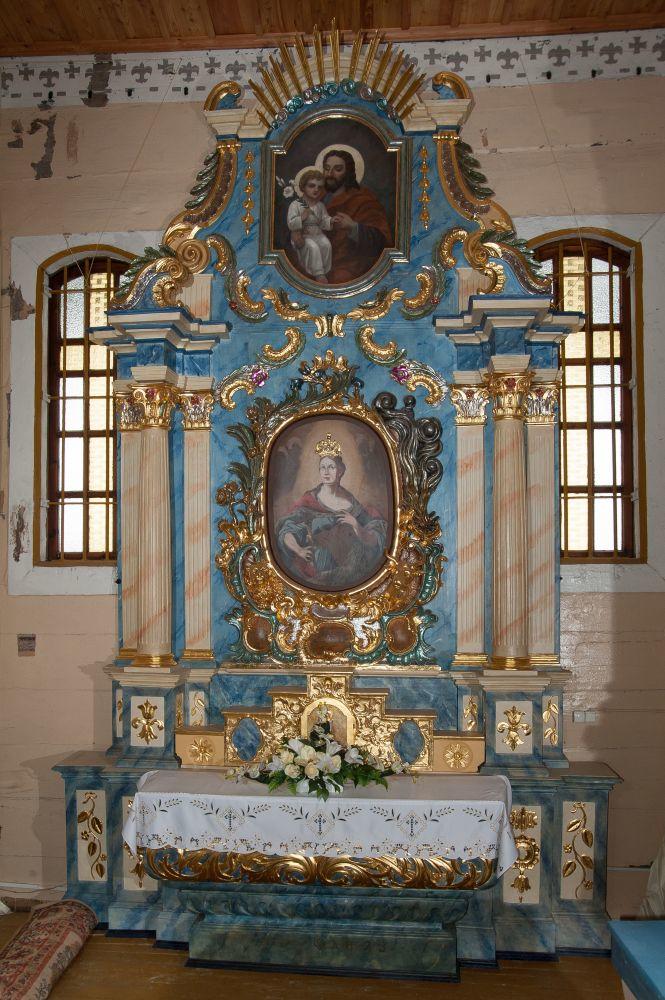

St. Thecla was a Christian virgin and a disciple of St. Paul who lived in the 1st century AD. When after her conversion she broke off her engagement with a pagan fiancé who her rich parents had chosen for her, she compromised herself in the eyes of the closest ones. For her love for Christ, she was sentenced to death by burning on stake. However, unexpected rain put down the flames thus preventing executioners from carrying on with the punishment. Therefore, she was thrown to hungry lions. But once again God saved her: the animals were standing still as gentle as lambs.
Coronation of the Blessed Virgin Mary

An extremely interesting object is a Baroque painting from the beginning of the 17th century, which shows the scene of coronation of the Blessed Virgin Mary. This multiple figure composition can be divided into the heavenly zone and the earthly zone. In the first zone, in the centre there is the Blessed Virgin who was presented while she is being
crowned by God the Father, the Son of God and the Holy Spirit (in a form of the dove). The group is accompanied by angles sitting in the clouds.
On the other hand, the bottom zone is filled with figures of three saints presented against a landscape in the background, who are kneeling and adoring the heavenly scene. On the left, there is St. Adalbert in a gold cape
and a processional cross in his hand. On the right we can see St. Stanislaus with a crozier who is accompanied by a small figure of Piotrowin. St. Nicolas and his atributes – three gold orbs is in the middle.
BENCHES OF THE PATRONS
The church in Blizanów was built in 1532, and in the 17th century it underwent rebuilding to a big scale and change of the furnishings. During this period, benches for the patrons were put in the chancery which were designed to the local nobility or village owners. Maksymilian Molski was a castellan in Rogoźno, and his wife was a founder of the polychromy and the painting of Mother of God with Child. Patrons’ (founders’) benches highlighted a special position of the aristocracy, who participated on the holy mass seated in the sacrum zone, separated from other parishioners.

Indulgences
September 8 (The Nativity of the Saint Virgin Mary) and December 6 (st. Nicholas)





